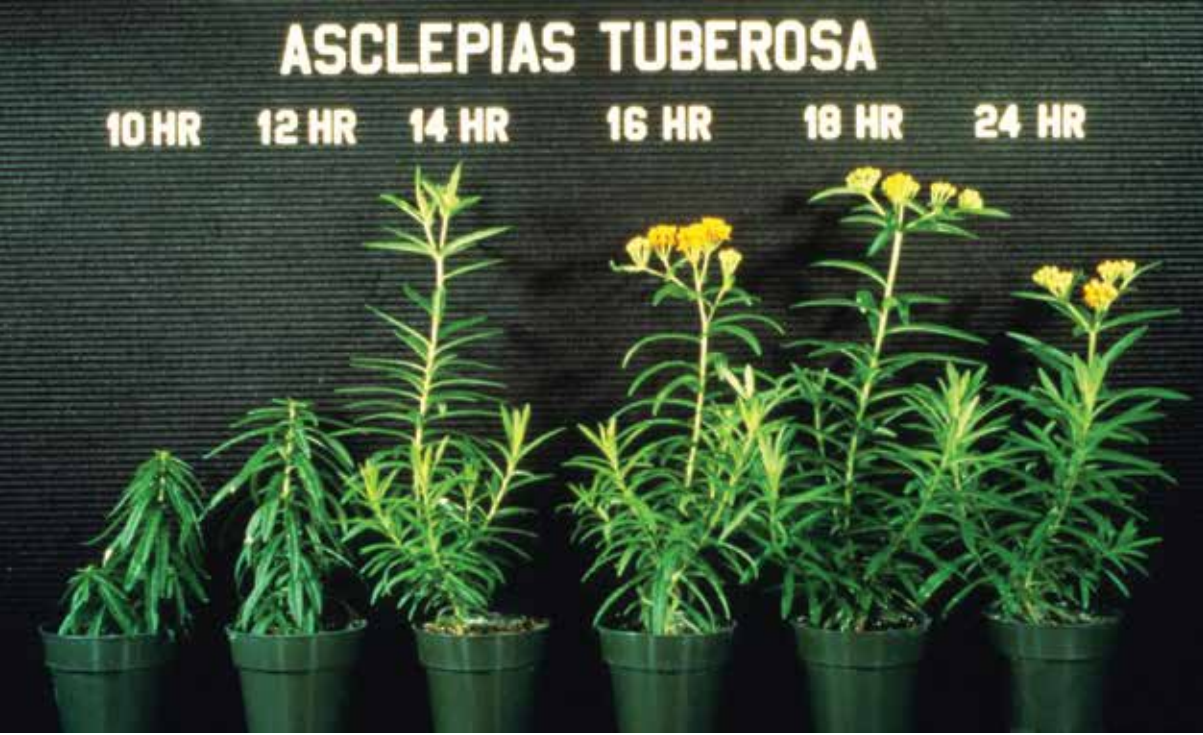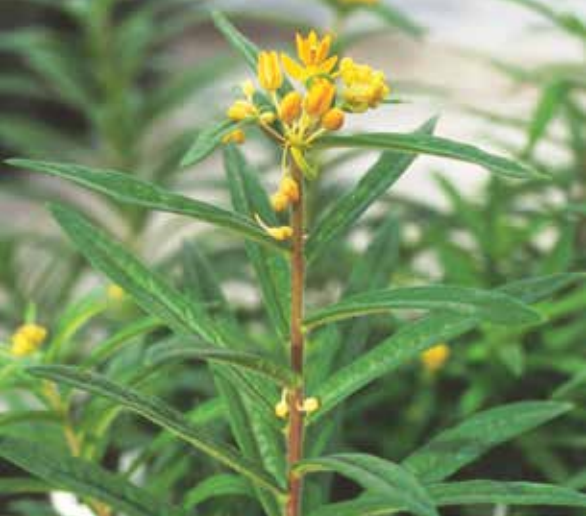
Asclepias tuberosa - Butterfly weed
DOWNLOADApril 12, 2017 - C. Whitman & E. Runkle
Asclepias tuberosa Butterfly Weed
Several species of milkweed, or asclepias, are native to North America, and this year the Perennial Plant Association has chosen one of them as Perennial Plant of the Year: Asclepias tuberosa. This species, commonly known as butterfly weed or butterfly milkweed, has vivid orange flowers with nectar and pollen that are attractive to many species of butterflies and bees. The foliage of butterfly weed is not a preferred food but can support monarch caterpillars. This drought-tolerant plant grows best in a dry and sunny location, and is hardy in Zones 3 to 9.
Butterfly weed has upright stems with clusters of bright orange flowers that contrast nicely with the shiny green leaves. The stem sap is not milky, unlike others in the genus. This species of milkweed does not spread by runners like common milkweed (Asclepias syriaca) does, so it is not invasive. Butterfly weed is not attractive to deer; however, aphids can be a problem in garden settings and in the greenhouse,
Demand for this plant is likely to be high in this and coming years. Butterfly weed will flower readily the first year after seed sowing, but there are a couple of key points for success in producing it commercially.

This species has some of the most dramatic responses to photoperiod we’ve seen. It is an obligate long-day plant, meaning that it requires long days for flowering. Plants grow rapidly under photoperiods of 14 hours or longer, and will begin flowering about eight to nine weeks after transplant when grown at an average of 68° F. However, if exposed to photoperiods of 12 hours or shorter, plants go dormant within a few days (Figure 1). Leaves become droopy, shoot growth apparently ceases, and existing flower buds may abort (Figure 2). Unfortunately, simply moving the plants back to long days will not restore them to active growth. To break this dormancy, a cold treatment of nine weeks or longer is needed; in our trials, all dormant plants exposed to 41° F for 15 weeks subsequently flowered.
To keep plants actively growing, it is absolutely essential to provide long days to these plants. We recommend providing a day length of at least 16 hours, or four hours of night interruption lighting. Photoperiodic lighting should deliver a minimum intensity of 2 μmol·m–2·s–1. Use lamps that provide both red and far-red radiation, like incandescent lights or LED bulbs designed to control flowering. Keep plants under these long photoperiods until natural daylengths are at least 14 hours long.

Butterfly weed develops a large tap root, which can make transplanting or division of established plants difficult. In container production, it’s very important to use a well-drained medium, so consider adding extra perlite to a typical peat+perlite mix. Be careful not to over-water during production or during cold treatments. The taproot is attractive to fungus gnat larvae, so be vigilant and check the roots if plants lack vigor.
In outdoor settings, butterfly weed can reach 3 feet in height, but in container production, our plants were 12 to 18 inches tall at first flowering. Several plant growth retardants are reportedly effective for height control including sprays of daminozide (e.g., B-Nine, Dazide) paclobutrazol (e.g., Piccolo, Bonzi) and uniconazole (e.g., Sumagic, Concise). Using several plugs per pot, or pinching seedlings soon after transplant, can help to fill out containers.



 Print
Print Email
Email




